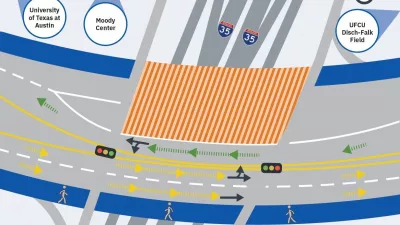(Credit: University of Texas)
The Texas Advanced Computing Center (TACC) at The University of Texas at Austin on Tuesday launched Frontera, the fastest supercomputer at any university and the fifth most powerful system in the world. TACC is also home to Stampede2, the second fastest supercomputer at any American university.
Tthe National Science Foundation funded the Frontera system with a $60 million award.
“Scientific challenges demand computing and data at the largest and most complex scales possible. That’s what Frontera is all about,” said Jim Kurose, assistant director for computer and information science and engineering at the NSF. “Frontera’s leadership-class computing capability will support the most computationally challenging science applications that U.S. scientists are working on today.”
Frontera has been supporting science applications since June and has already enabled more than three dozen teams to conduct research on a range of topics from black hole physics to climate modeling to drug design, employing simulation, data analysis and artificial intelligence at a scale not previously possible.
“It’s a great machine, especially for quantum mechanics applications,” said Olexandr Isayev, a chemist at the University of North Carolina who used Frontera to run more than 3 million atomic force field calculations in less than 24 hours — a major achievement in high-speed quantum computation. “We’re really looking forward to running large-scale calculations that were not possible before.”
Frontera combines Dell EMC PowerEdge servers with 8,008 compute nodes, each of which contains two second-generation Intel Xeon scalable (“Cascade Lake”) processors, totaling more than 16,000 processors and nearly half a million cores, connected by a 200 gigabit per second HDR Mellanox InfiniBand high-speed network.
The system incorporates innovative flash storage from DataDirect Networks and novel cooling systems from CoolIT, Cooltera and Green Revolution Cooling (GRC), and it employs several emerging technologies at unprecedented scale, including high-powered, high-clock-rate versions of the latest Intel Xeon processors, Intel Deep Learning Boost, Intel Optane memory and several kinds of liquid cooling.
In August, Frontera added two new subsystems to provide additional performance and to explore alternate computational architectures for the future. A 360 NVIDIA Quadro RTX 5000 GPU (graphics processing unit) system submerged in liquid coolant racks developed by GRC will explore more efficient ways to cool future systems, as well as explore single-precision optimized computing. An IBM POWER9-hosted system with 448 NVIDIA V100 GPUs will provide additional performance, and provide the top-performing GPU architecture with tight coupling to the processor and memory subsystems.
In the coming months, Frontera will integrate with cloud providers Microsoft, Google and Amazon to provide researchers access to emerging computing technologies and long-term storage.
Frontera (Spanish for “frontier”) will operate for at least five years and will support hundreds of research projects and thousands of researchers in nearly every field of science over its lifetime. It is expected to have a major impact on:
- Natural hazards modeling — predicting the trajectory and intensity of storms, and helping to design infrastructure that can withstand the strongest disasters;
- Genomics — including precision agriculture to feed the world’s growing population;
- Energy research — from fusion to solar power to cleaner coal;
- Astrophysics — including multimessenger astronomy and gravitational wave modeling;
- Materials sciences — using a combination of modeling and deep learning to accelerate the development of new molecules for medicine and engineering.
Projects will be selected through a competitive application process, and researchers will need to show that they require a computer at the scale of Frontera to solve their problems.
“Academic researchers have never had a tool this powerful to solve the problems that matter to them,” said Dan Stanzione, TACC executive director. “We are proud to launch Frontera — a new, national resource for science that will power the discoveries of the future.”





